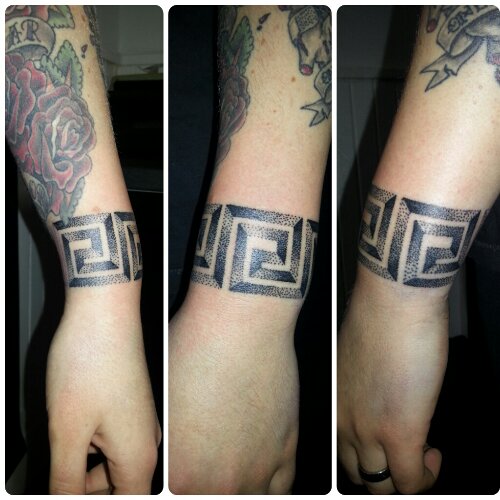

* * * The occurrence of such crosses in different parts of the world may or may not point to a common origin, but if they are once called Svastika the vulgus profanum will at once jump to the conclusion that they all come from India, and it will take some time to weed out such prejudice.” (Muller in Schliemann 1881: 346) It is a word of Indian origin and has its history and definite meaning in India. “I do not like the use of the word svastika outside of India. If one does perform cross-cultural comparison then that implies that the swastika has an almost uniform meaning, but also it would lead one on a ‘wild goose chase’ of attempting to trace the swastika throughout the world and to see what extent external cultural influences had on Ancient Greece. The reasoning behind this is simply because of the fact that swastika appears all around the world. There will be no intentional cross-cultural comparison of the use of the swastika. Is it a symbol of auspiciousness? Is it just another form of decoration? Is it a symbol of life? Or is it more than that? What this paper will not do is step outside the confines of Greece. What this paper will be attempting to discover is what the swastika symbolises or represents in the Geometric and Orientalising eras. What will be specifically discussed is the meaning of the swastika in Archaic Greece, focussing particularly on the Geometric and Orientalising periods as it is in these periods where we find an abundance of this symbol. In this case it is the use of the swastika in material culture of this period and this is what this paper will be addressing. With all this change and development, one often overlooks certain features. More importantly we see the development of a Greek Identity that is quite unique. We see art develop from the Geometric style to the Black-Figure and Red-Figure style. Thought is changing as philosophy rises in the 6th century and literature develops as we see the emergence of Homer and Hesiod’s works. This is the time of Solon, Lycurgus, Draco, Peristatos and Thrasybulus, and it is a time where great wars were fought such as the First Messenian War and the Greco-Persian War.

The polis starts to develop, democracy is established in Attica and Greek colonies continue to grow. Now the Archaic period is an exciting time in Greek History, the ‘Dark Ages’ are over and a ‘structural revolution’ (Snodgrass 1980:13) is occurring. While it appears somewhat in the Classical and Hellenistic periods, we find a large amount in Archaic Greece. The most notable evidence of the use of the swastika is at Hisarlik most commonly known as the site of the city of Troy, where swastikas were found by Schliemann decorated upon ‘spindle whorls’ (Schliemann 1881: 350 D’Alviella 1894: 60). From excavations at the House of Tiles on Lemnos, we can find swastikas on some of the seals that were excavated there and there is evidence of it being found in the Minoan period. The Swastika is not exactly new to the Aegean. Now with the swastika appearing almost everywhere, it is hardly surprising that we find it in Ancient Greece. Some writers have been ascribed as being linked to deities such as the god Baal and Agni (Wilson 1894: 771-772). However in all of these cultures, the swastika possessed a different meaning, whether it was another symbol for \ in Hinduism or, in some Native American cultures, it was a representation of the four winds.Ĭardiff University, Ancient History, Graduate Student It has been carved onto 30,000 year old mammoth tusks, it has been found on Neolithic Serbian tablets, its use has been noted in West Africa, the Indian sub-continent, Scandinavian and Germanic cultures and it was even employed during the period of Roman Christianity. It has been found among hundreds of the cultures around the world. The Swastika is one of the most common and enigmatic symbols in human history.


 0 kommentar(er)
0 kommentar(er)
